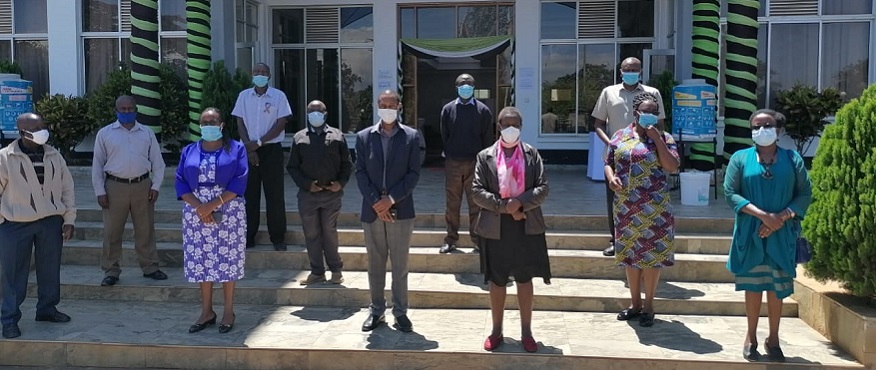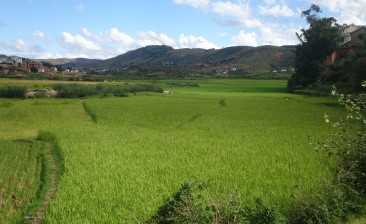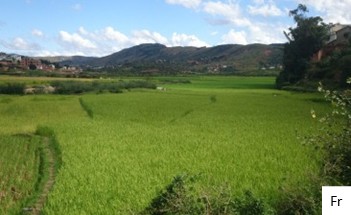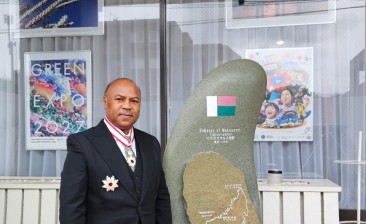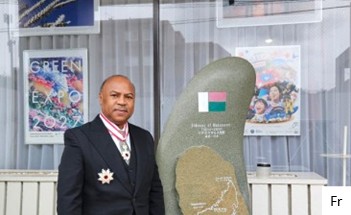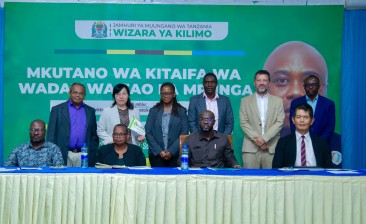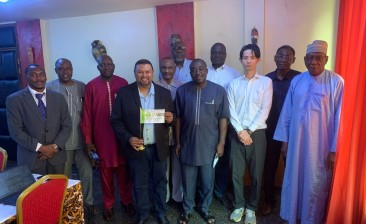Kenya, October 2020
CARD Working Week for developing NRDS-II Project Concept Notes NRDS-2 in Kenya
Rice is an important food crop in Kenya. Since 2008, area under the rice cultivation has broadened by 55% from 16,734 Ha to 25,966 Ha in 2018, paddy production has increased by 4-fold from 21,881 tons to 110,325 tons in 2018, and on-farm productivity has more than doubled from 1.3 t/Ha to 4.25 t/Ha. The increments were augmented by Government of Kenya’s conscious efforts in enhancing production, processing and marketing of rice in Kenya (GoK) through National Rice Development Strategy (NRDS-I; 2008-2018). Despite the progress made under the NRDS-I however, the national markets continue to be dependent on the supply of rice from Asia and the region to meet the consumer requirements.
Soon after the extension of the tenure of CARD activities to 2019-2030 by its stakeholders, the GoK expressed its interest in renewing its NRDS-I to a second phase. Ministry of Agriculture, Livestock, Fisheries and Cooperatives (MoALF&C) mandated National Rice Technical Committee (NRTC) to renew the NRDS-I. With technical and financial support from CARD, the NRTC drafted and validated the NRDS-II with MoALF&C and other rice stakeholders in July-2020. The overall objective of the approved NRDS-II is to increase domestic milled rice production by 7-fold from 128,000 MT in 2019 to 846,000 MT by 2030.
Following the official approval of the NRDS-II by MoALF&C, the NRTC requested CARD Secretariat to help organize a working week for identifying bankable projects that will lead to implementation of the NRDS-II. By following the Ministry of Health’s COVID-19 related safety guidelines and regulations, the NRTC members organized a meeting between 5th and 9th of October, 2020 at Embu. Since the COVID-19 pandemic has curtailed CARD’s missionary activities in all the member countries, the NRTC requested CARD’s consultant to join the meeting virtually and provide the necessary technical assistance online. This report presents a summary of the activities and results obtained from the working week.
CARD activity and the results
The working week (WW) was organized at the conference facility of Kenya School of Government, at Embu. About 12 members of the NRTC (representing various segments of the rice value chain) participated during the working week. After welcoming the participants, the focal point Dr. Mary Mutembei briefed the participants on the objectives and the expected outputs of the WW. By recalling the strategic framework of the NRDS-II, the consultant reminded the participants of the goal, strategic objectives and the various strategic approaches that were put forth under the NRDS-II. Given the numerous interventions that are outlined under the NRDS-II for achieving the set target, it became necessary to identify the most tangible and impactful intervention elements.
In order to prioritize such critical elements, the consultant assisted the NRTC members enlist about 15 major interventions (Table 1) for attaining the overall objective of the NRDS-II. Based on their perceived importance, the participants ranked each intervention by scoring their importance on a scale of 1 to 5, where a score of 1 implies less important and that of 5 implies very important. Cumulative ranking for some of the interventions were too close to delineate their importance. Hence, the consultant guided the participants to undertake a ‘pairwise’ scoring of interventions, in which the participants compared two interventions at a time and scored which one of the given pair is preferred. Based on the scores of all the participants, weights and weighted scores of each intervention were calculated. The interventions were then ranked according to the weighted scores. The participants discussed the results from such an analytic hierarchy process and agreed that the prioritization shall be taken from the rankings (Table 1). It was also agreed that based on the top ranked intervention themes, 12 concept notes shall be prepared.
Priority elements identified by the taskforce members during the working week
| Strategic Objective | Rank | Intervention Area/Field/Element |
| SO-1. Expansion of area under rice cultivation | 3 | Rehabilitation of “existing” irrigation infrastructures |
| 11 | Irrigation infrastructures (new establishment) | |
| 10 | Rain-fed area Expansion | |
| SO-2. Increments in on-farm productivity | 2 | Inputs, technologies |
| 1 | Appropriate mechanization | |
| 6 | Minimizing harvest, postharvest losses | |
| 13 | Soil and water management | |
| SO-3. Improvements in market competitiveness | 4 | Reducing the cost of production |
| 7 | Improving the quality of locally produced rice | |
| 8 | Promote efficient marketing & trading | |
| SO-4. Promoting Private Sector Participation | 12 | Private Sector – Input supply |
| 9 | Private Sector – Hiring/Service provision (machineries), Support services | |
| 14 | Private Sector – Value Addition (packaging, branding, by-products) | |
| 5 | Farmer based organizations | |
| 15 | Large scale (>1,000 Ha) private rice farms |
The consultant informed the participants that the purpose of developing concept notes at this stage is to come up with ‘ideas’ for bankable projects and that the ideas shall be expanded into typical concept/project documents at a later stage. The consultant guided the participants on how to fill the expected contents in a ‘one-page CARD format’ of concept notes by taking them through one project concept as an example. On the basis of the expertise of individuals, the participants formed three groups for preparing a total of 12 concept notes. After preparing the initial draft of the concept notes, the participants peer-reviewed all the 12 concept notes together. Group members then discussed the various inputs and suggestions received during the peer-review session and finalized their respective concept notes.
Way forward
The NRTC members will fine tune the concept notes and share them with CARD Secretariat. The CARD Secretariat will seek the consent from MoALF&C for organizing fund-matching activities between NRTC, potential development partners and private sector. By profiling the country investment portfolios of the various development partners and private sector, CARD will then identify those partners who might be interested in funding the concept notes in Kenya.
Based on the current and potential strengths and interests of each of the identified development partner and private sector, CARD will attempt to match the scopes and needs outlined in the concept notes for funding. CARD will facilitate lobbying for potential funding opportunities, by arranging discussions between the NRTC members and development partners and private sector. If further elaboration of the concept notes is required, CARD will provide the necessary technical assistance to the NRTC in expanding the concept notes into full project proposal for funding by the development partners and private sector, as appropriate.
